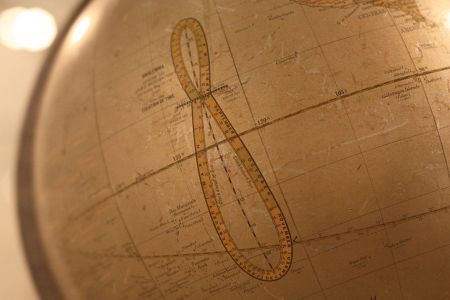The second solstice for the year is today, December 21st. It literally happens at a moment in time but like many cosmic events, most of us think of it as a day. For those in Northern Hemisphere, it will be the winter solstice and for those in Southern Hemisphere, it will be the summer solstice marking the first day of the two seasons.
At that moment, it will be sunset in North and South America, sunrise in far-eastern Asia, midnight in Africa and Europe, and noontime over the Pacific Ocean.
In Paradelle (Northern Hemisphere), we will have our shortest day and longest night of the year. This month, one rotation of Earth relative to the noonday sun – what we call a day – is about 30 seconds longer than the average 24 hours. Get past that “day” that is on your calendar or the idea of that clock face.
You would actually be better off measuring the true length of a solar day (the time from one solar noon to the next) by using a sundial.
The photo at the top of this post shows an analemma printed on a globe that shows the sun’s declination. That is the angular distance from the celestial equator and the difference (in minutes) between time as measured by the clock and time as measured by the sun. Sounds complicated, right?
In fact, in astronomy, an analemma (from Greek “pedestal of a sundial”) is a curve representing the changing angular offset of a celestial body (usually the Sun) from its mean position on the celestial sphere as viewed from another celestial body (usually the Earth). Still complicated.

The Earth’s annual revolution around the Sun is an elliptical orbit. That means it is tilted relative to the plane of the equator. We, being observers at a fixed point on the Earth, see the Sun appear to move in an analemma around a mean position. If you observed the position of the Sun in the sky and plotted it or photographed it at the same time every few days, all year-long, the points would trace out the analemma.
I did this very unscientifically one year by just noting where the Sun appeared (I used a compass) when viewed every morning as I had my breakfast and gazed out the east window. It amazed me how far the Sun moved during the year. I ended up with a graph of the Sun’s declination plotted against the equation of time.
Like the “equator” or other terms, an analemma is an abstract concept. It has no physical existence except in diagrams and time-lapse photographs. Nevertheless, we do describe it as if it were a real, visible celestial object.









